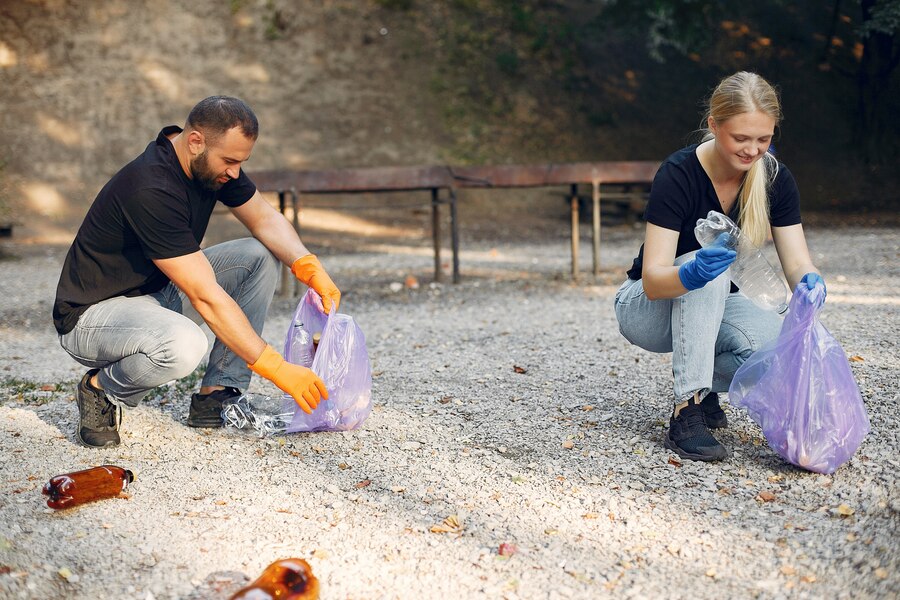
How to organize a successful local cleanup event
Organizing a local cleanup event is a great way to bring your community together and make a tangible impact on the environment. Whether you’re focusing on parks, beaches, or urban spaces, a well-organized event can leave a lasting impression. Here’s a step-by-step guide to help you plan and execute a successful cleanup.
1. Identify a cleanup location and set clear goals
Start by selecting a location in need of attention. It could be a neighborhood park, a riverbank, a beach, or even streets around your town. Consider the following when choosing the site:
- Accessibility: Ensure the area is easy for volunteers to reach.
- Impact: Focus on areas with visible litter or pollution to make the results noticeable.
- Safety: Avoid hazardous zones or those requiring specialized equipment.
Once you’ve chosen a location, set specific goals. Do you want to collect a certain amount of trash, recycle materials, or raise awareness about waste management?
2. Get permission and support
Contact the local authorities or property owners to secure the necessary permissions. Partnering with municipal offices or environmental organizations can also provide you with additional resources such as tools, volunteers, or waste disposal services.
3. Assemble a team
While you can organize the event on your own, having a team of committed volunteers will help distribute responsibilities. Roles may include:
- Promotion and outreach: To spread the word.
- Logistics: To handle supplies and equipment.
- Safety management: To ensure guidelines are followed.
Working as a team will ensure the event runs smoothly and gives everyone a clear sense of purpose.
4. Plan logistics and supplies
Create a checklist of everything you’ll need. Essentials may include:
- Trash bags: Ensure they’re sturdy enough for heavy waste.
- Gloves: Provide protective gloves for all volunteers.
- Recycling bins: Sort recyclables from general waste.
- Tools: Grabbers, rakes, or brooms may be helpful depending on the location.
- First-aid kit: Be prepared for minor injuries.
Arrange for waste disposal ahead of time. Contact local waste management services to ensure collected trash is properly handled.
5. Promote the event
A successful cleanup event relies on good participation. Use multiple channels to reach potential volunteers:
- Social media: Create an event page on platforms like Facebook or Instagram. Use hashtags like #LocalCleanup or #EcoAction.
- Community boards: Put up flyers at libraries, schools, and coffee shops.
- Local news outlets: Reach out to newspapers or radio stations for publicity.
- Word of mouth: Encourage friends and family to spread the word.
Make sure your promotion materials clearly state the time, location, what to bring, and why the event is important.
6. Ensure safety and provide guidance
Safety should be a top priority during the event. Offer a briefing session before starting, including:
- Proper waste handling: Explain how to pick up sharp objects and handle hazardous waste.
- Sorting guidelines: Clarify what goes into trash bags versus recycling bins.
- Emergency contacts: Provide a phone number in case of accidents.
Encourage participants to dress appropriately for the weather and wear sturdy footwear.
7. Make it fun and engaging
A cleanup event doesn’t have to be all work. Add activities to keep participants motivated:
- Competitions: Reward teams or individuals for collecting the most trash.
- Music: Bring portable speakers to energize the group.
- Refreshments: Offer water and light snacks to keep everyone hydrated and energized.
A fun and welcoming atmosphere encourages people to participate again in the future.
8. Measure and celebrate your impact
After the event, take stock of what you’ve achieved. Share the results with your volunteers and community, such as:
- Total weight or volume of trash collected.
- Number of participants.
- Before-and-after photos of the area.
Celebrate your success with a group photo and thank everyone who contributed. Sharing your results on social media or local news can inspire others to organize similar events.
9. Follow up
To ensure lasting impact, consider these follow-up steps:
- Stay in touch: Create a mailing list or group chat for volunteers interested in future events.
- Report to authorities: Share feedback and results with local officials to highlight the value of cleanup initiatives.
- Plan the next event: Build on your momentum by scheduling future cleanups or projects.
Conclusion
Organizing a local cleanup event is a meaningful way to take action for the environment and engage with your community. With proper planning, effective communication, and a touch of creativity, your event can make a significant difference and inspire lasting change. So gather your team, roll up your sleeves, and make your local area a cleaner, greener place for everyone!
